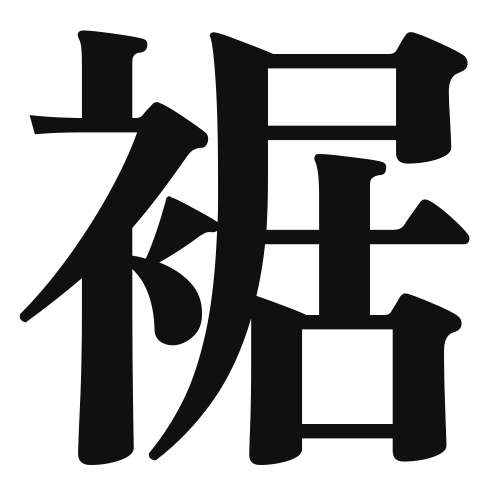1. Overview of Meaning
The kanji “裾” (suso) refers to the hem or bottom edge of a garment, such as a skirt or pants. It can also imply the lower part of something, often used in a metaphorical sense.
2. Formation and Radical
Formation of the Kanji: The kanji “裾” is a compound character that combines the radical for “clothing” (衣) with the phonetic component “so” (so). This reflects its association with garments.
Radical: The radical of “裾” is 衣 (koromo), which relates to clothing and textiles.
3. Examples of Usage
Common Words and Phrases:
- 裾野 (suso no) – foothills
- 裾上げ (susoage) – shortening the hem
Example Sentences in Daily Conversation:
- このスカートの裾が長すぎる。 (Kono sukāto no suso ga nagasugiru.) – The hem of this skirt is too long.
- 裾野の風景が美しい。 (Susono no fūkei ga utsukushii.) – The scenery of the foothills is beautiful.
4. Synonyms and Antonyms
Similar Kanji:
- 端 (hashi) – edge; refers to the edge of an object, but is more general than “裾”.
- 縁 (en) – border; often used for the edges of objects, but can also refer to relationships.
Antonyms:
- 上 (ue) – above; indicates a position higher than something else.
5. Cultural and Historical Background
Relation to Japanese Culture: The concept of “裾” is significant in traditional Japanese clothing, such as kimono, where the hem is an important aspect of the garment’s design and elegance.
Proverbs and Idioms:
- 裾野が広がる (susono ga hirogaru) – to expand one’s influence or reach, often used in a metaphorical sense.
